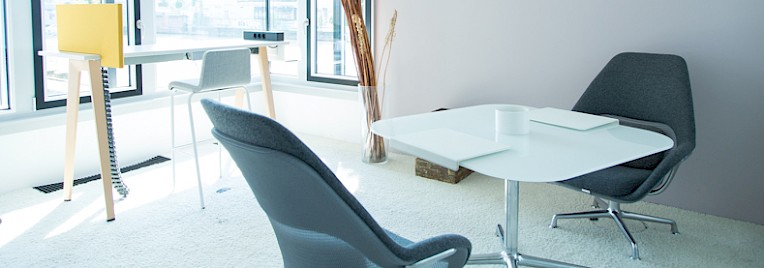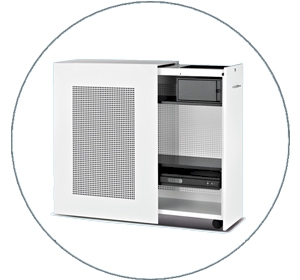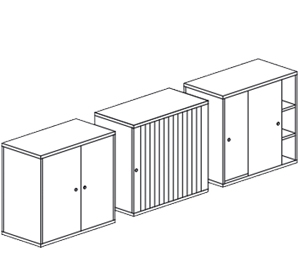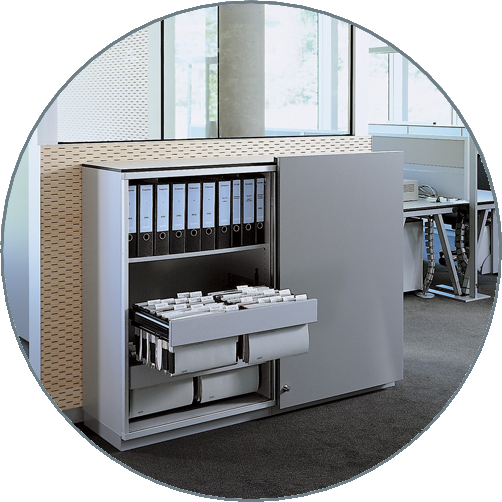
Furniture
Cabinets
Find out more
Quality standards for office cabinets



General requirements
- The cabinet has a GS mark signifying “tested for safety”.
Among other things, the GS mark guarantees the stability, strength and rigidity of the framework. Cabinets are tested for the strength of shelf supports, the durability of hinges and the smooth functioning of drawers. - To ensure stability,
cabinets should stand on a peripheral base or a pedestal. Cabinets require adjustable levelling screws that can be adjusted both initially and later on. - Storage furniture on rollers
must be equipped with lockable castors. - The cabinets should be part of a modular system
consisting of modules of different heights that can be combined in various ways. Several types of cabinet front panels should be available, such as hinged doors, sliding doors and shutter fronts. This makes it possible to set up changed combinations of cabinets as needed. - The entire interior of a cabinet should be available for use.
Front panels, doors and hinges should be designed so that they do not interfere with the use of the cabinet and permit the unobstructed insertion and extraction of files and other materials. - Shelves and top panels should be secured against bending.
The user instructions indicate how heavy a load they may bear. - If the cabinets have pull-out elements (storage shelves or hanging files),
their movement should be smooth and noiseless.
Additional functions
- Shielding work areas:
Cabinets can be used as visual and acoustic shields for individual as well as group workplaces if the cabinets are at least 140 cm high. This can be a countermeasure to prevent a sense of being constantly monitored. - Sound absorbers:
If cabinet front panels and/or backs are covered with sound-absorbing materials, they can also help to reduce the level of noise in a room. - Attractive design:
If cabinets are set up not against walls but between workplaces, finished panels can add colour to the office or, when equipped with the proper backing, they can be used as bulletin boards.

The Quality Office seal can help you select office cabinets, containers and all other furniture.

